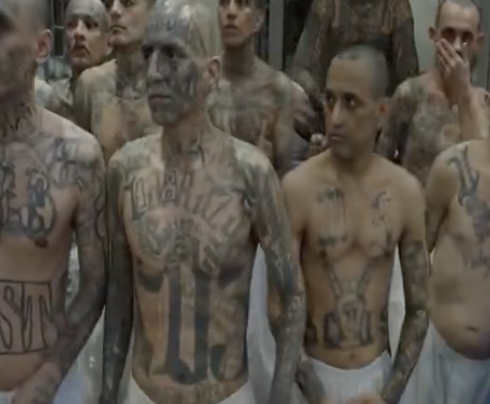CNN just got a rare look at El Salvador's gang prison. This is why homicides are down 92%.
— End Wokeness (@EndWokeness) November 15, 2024
pic.twitter.com/8W4t1iTUNK
In the heart of Central America, El Salvador had long been ensnared in the deadly grip of gang violence, with MS-13 and Barrio 18 dictating life in its most impoverished neighborhoods. But as the calendar turned to 2024, a startling transformation was underway, one that would see the country’s homicide rates plummet by an unprecedented 91% from their peak in 2015.
The story began with President Nayib Bukele’s decisive declaration of a “state of exception” in 2022. This wasn’t just political rhetoric; it was an all-out war on the gangs that had terrorized the nation for decades. The government’s first move was to arrest over 83,100 suspected gang members in what could only be described as a sweeping dragnet. The usual legal formalities were set aside in favor of swift justice, leading to scenes of mass detentions that filled the news feeds and echoed through the international community.
But this was only the beginning. The Territorial Control Plan, launched in 2019, became the backbone of El Salvador’s new security doctrine. It was a comprehensive strategy where increased police presence wasn’t just about visibility; it was about reclaiming territory. The plan included not only security operations but also community initiatives designed to steer the youth away from gang life, offering them alternatives in education and recreation.
Relief..but Human Rights issues emerged
As these strategies unfolded, the streets of El Salvador, once marked by the fear of sudden violence, started to breathe with a cautious sense of relief. The government’s firm stance against gang influence meant that those who once ruled through terror found themselves behind bars, their chains clinking not just in the physical sense but also symbolically breaking their hold over the populace.
However, human rights organizations have pointed out that in the quest for peace, the rights of many might have been trampled upon. Stories emerged of innocent lives caught in the dragnet, of families left in limbo, and of detention conditions that might not pass the scrutiny of international law.
Yet, the public’s approval was palpable. For many Salvadorans, the trade-off seemed worth it. The sight of children playing football on streets once ruled by fear, of businesses opening late into the night, and of a populace reclaiming their communities, painted a new picture of El Salvador. The government’s tough measures, despite their controversial nature, were seen by many as the necessary price for tranquility.
There have also been tales of quiet negotiations behind prison walls, where gang leaders, perhaps, were promised something in return for peace. If true, these deals add layers of complexity to the story, suggesting peace might be fragile, reliant on continued governmental control or perhaps even covert agreements.
Meanwhile, crime is down, the people are happy and the model is enticing.
